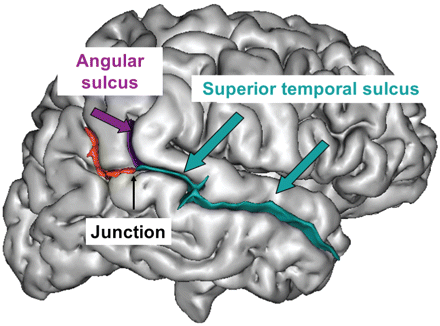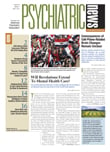French scientists reported in the January Schizophrenia Bulletin that they may have found the location in the brain where auditory hallucinations originate.
It is the junction between the right temporal lobe and the right parietal lobe.
This region is also known to be a key area for normal hearing as well as for so-called out-of-body experiences, in which people feel that their "self" is located outside their physical body, the scientists pointed out.
The study's lead investigator was Arnaud Cachia, Ph.D., who is affiliated with the Center for Psychiatry and Neurosciences at Paris Descartes University-INSERM.
The study sample included 27 right-handed subjects with schizophrenia who experienced persistent auditory hallucinations, as well as 20 mentally healthy right-handed subjects. Of the subjects with schizophrenia, 15 experienced only inner-space hallucinations (that is, heard voices only inside their heads), and 12 experienced only outer-space hallucinations (that is, heard voices originating only outside their heads).
The scientists then made magnetic resonance images of the brains of the subjects with hallucinations and of the controls.
Compared with control subjects, those in the two hallucination groups showed white matter volume abnormalities in the right temporoparietal junction. Subjects with inner-space hallucinations had increased white matter volume, while subjects with outer-space hallucinations had decreased white matter volume.
In addition, a sulcal displacement in the right temporoparietal junction was found in the two hallucination groups but not in the controls. The outer-space hallucination group showed an anterior displacement, whereas the inner-space hallucination group showed a posterior displacement.
"The current results indicate that spatial location of auditory hallucinations is associated with the right temporoparietal junction anatomy, a key region of the ‘where’ auditory pathway," Cachia and his colleagues concluded. Moreover, the results "lead to the speculation that the preference for attaching either an ‘external’ or ‘internal’ location to auditory hallucinations could be associated with anatomical particularities of the junction."
Clinical Implications Suggested
These discoveries may have clinical implications for the approximately 33 percent of schizophrenia patients whose auditory hallucinations are resistant to treatment, Cachia told Psychiatric News. For example, since external and internal auditory hallucinations seem to involve different mechanisms, they may require different types of treatments and may give researchers a target on which to focus drug-development efforts.
These discoveries likewise have implications for the origins of schizophrenia, Cachia pointed out. The sulcus abnormalities that he and his team detected in the two hallucination groups probably occurred during early brain maturation—that is, during the sixth and seventh months of pregnancy. Thus it's possible that a viral infection at this time may have caused, or at least contributed to, the abnormalities. "We cannot test this hypothesis now, as we do not have any information related to possible viral infection in the records of our patients," he said. "But it may be interesting in future studies to investigate [this hypothesis] in schizophrenia patients with known viral infection during pregnancy."
"This is an interesting paper," Ralph Hoffman, M.D., a professor of psychiatry at Yale University and an auditory hallucination authority, told Psychiatric News. He and his colleagues have just completed a study that also suggests that auditory hallucinations arise in the right temporoparietal junction area, he said. Results of that study are published in the April British Journal of Psychiatry.
Critical Question Awaits Answer
But the problem with this research, Hoffman said, is that "I don't know how much one can infer from white matter volume and sulcal anatomy. Also, I think the most critical question is, What distinguishes patients who experience auditory hallucinations from those patients without them?"
Some insight into this question might have emerged if the scientists had measured white matter volume and sulcal anatomy not just in subjects who experienced either inner-space or outer-space hallucinations, but who experienced both types, Robert Buchanan, M.D., a professor of psychiatry at the University of Maryland and a schizophrenia expert, suggested to Psychiatric News. And if the measures of the mixed group had lain between the two extreme subject groups and overlapped with the average of the control group, then that finding would have tended to "support an interaction between normal variation of this region and some other disease process," he said.
And as Cachia pointed out, other scientists have found that the right temporoparietal junction is the brain region responsible for out-of-body experiences, in which people sense that their "self" is located outside the physical body. So the right temporoparietal junction "might be a key region for spatial awareness" whether it has to do with normal hearing, hearing voices inside or outside the head, or out-of-body experiences, Cachia said.
The study was funded by the National Agency for Research, the Foundation for Medical Research, and other groups.

